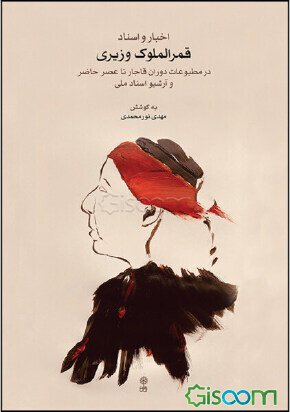The second edition of “News and Documents of Qamar al-Muluk Vaziri” was published.
The second edition of “News and Documents of Qamar al-Muluk Vaziri” was published.
According to MUSIQI MA News-Analysis site, the second edition of “news and documents of Qamar al-Muluk Vaziri in the press of the Qajar period to the present day and the archive of national documents” was published by Mahour Publishing.
This book has two general part. The first section is news in which any news related to Qamar al-Muluk Vaziri, including announcing concerts and selling gramophone records, memoirs and writings, radio programs, memoirs and writings of others about her, and news of her disease, death burial had been collected and published among the newspapers and magazines of the first and second Pahlavi eras, some of which are rare or cannot be found.
The second part is dedicated to documents that have all been extracted and read from the archives of the National Archives and Library of Iran. This book, by presenting new and unpublished points and information, provides more knowledge about Qamar al-Muluk Vaziri and his life and works and opens a new window for researchers and interested in this cultural, artistic and social figure of the first and second Pahlavi era.
Qamar al-Muluk Vaziri, who died in 1959, was one of the prominent figures of original Iranian music. Her works had many fans, and of course another aspect of her fame was due to his benevolent social activities and high human qualities. According to history, she spent her whole life helping the deprived and lower classes and giving what she got from music programs to the poor according to morals, and this caused her to be in a bad economic situation and distressed towards the end of her life.
She maintained her good qualities even until the end of her life and the days of her disease and deprivation. Performing concerts for the benefit of earthquake victims, flood victims and concerts for the benefit of Ferdowsi’s mausoleum are among her memories. Aref Qazvini is the first musician to give a concert in favor of the construction of Ferdowsi Tomb. This concert took the stage in the summer of 1921 with the piano of the mayor Mushir Homayoun in the National Garden of Mashhad. The second musician is Colonel Alinaghi Vaziri, who staged a concert in 1305 with the orchestra of the Higher School of Music in the Nizam School Hall in favor of the construction of Ferdowsi Tomb. After Aref Qazvini and Colonel Vaziri, Banoo Vaziri is the third musician to give a concert in favor of the construction of Ferdowsi Tomb. This concert was performed in October 1930 in Mashhad, and Habib Samaei, santor player, and Mohammad Ali Shahabi, tar player, accompanied Qamar in this concert.
Another her feature is that during her years of artistic activity, she never went beyond the standards of high music and the framework of Iranian instrumental music. For this reason, great people such as Mohammad Hussein Shahriyar and the living memory of Master Jalaluddin Homayi wrote poems describing her. In his introduction, Mehdi Nourmohammadi quoted this verse from Master Homayi:
The stars of art have blown enough and still the dark night of the lovers is brighter than the moon
This book provides important information about the life and death of this musician to the audience. For example, this book shows that the audience realizes that the idea of allocating a plot of land for the artists’ cemetery was formed among the artists after the death of Qamar. The book also includes newly discovered photographs of the artist, which were not previously available in any written reference. At a glance, some of the important features of the news in the first part of the book, which contains valuable points about Qamar and provides important information and sometimes updates to those interested and researchers are:
– Qamar, along with Musa Maroufi, performed a concert for the first time in NAVA instrument, which, according to its advertisement, had no stage performance in Iran until 1928. It should be noted that NAVA, along with Rast Panjgah, was one of the abandoned Iranian instruments that was rarely performed by musicians in the past.
– In 1928 and the following years, in the press, the artist, singer or musician was referred to as an artist.
– Qamar in 1936 with Abolhassan Saba performed a concert in Tehran cinema hall.
– A review of radio music programs during 1941-1942 indicates that Qamar, along with musicians such as Ali Akbar Shahnazi, Morteza Mahjoubi, Abolhassan Saba, Habib Samaei and Mehdi Khaledi, performed on the radio.
– Qamar program on the radio has been stopped since October 1943 due to hypertension and stroke.
– At the end of life and during the period of intensification of the disease, Qamar dreamed of going to Karbala.
– The first stroke occurred in 1954.
The artist was so famous that was mentioned and criticized by various magazines. In this book, news has been published from different newspapers such as Shafaq Sorkh, Etelaat, Iran, Tehran Mosavar, Kooshesh, Kayhan and etc.




Leave a Reply
Want to join the discussion?Feel free to contribute!